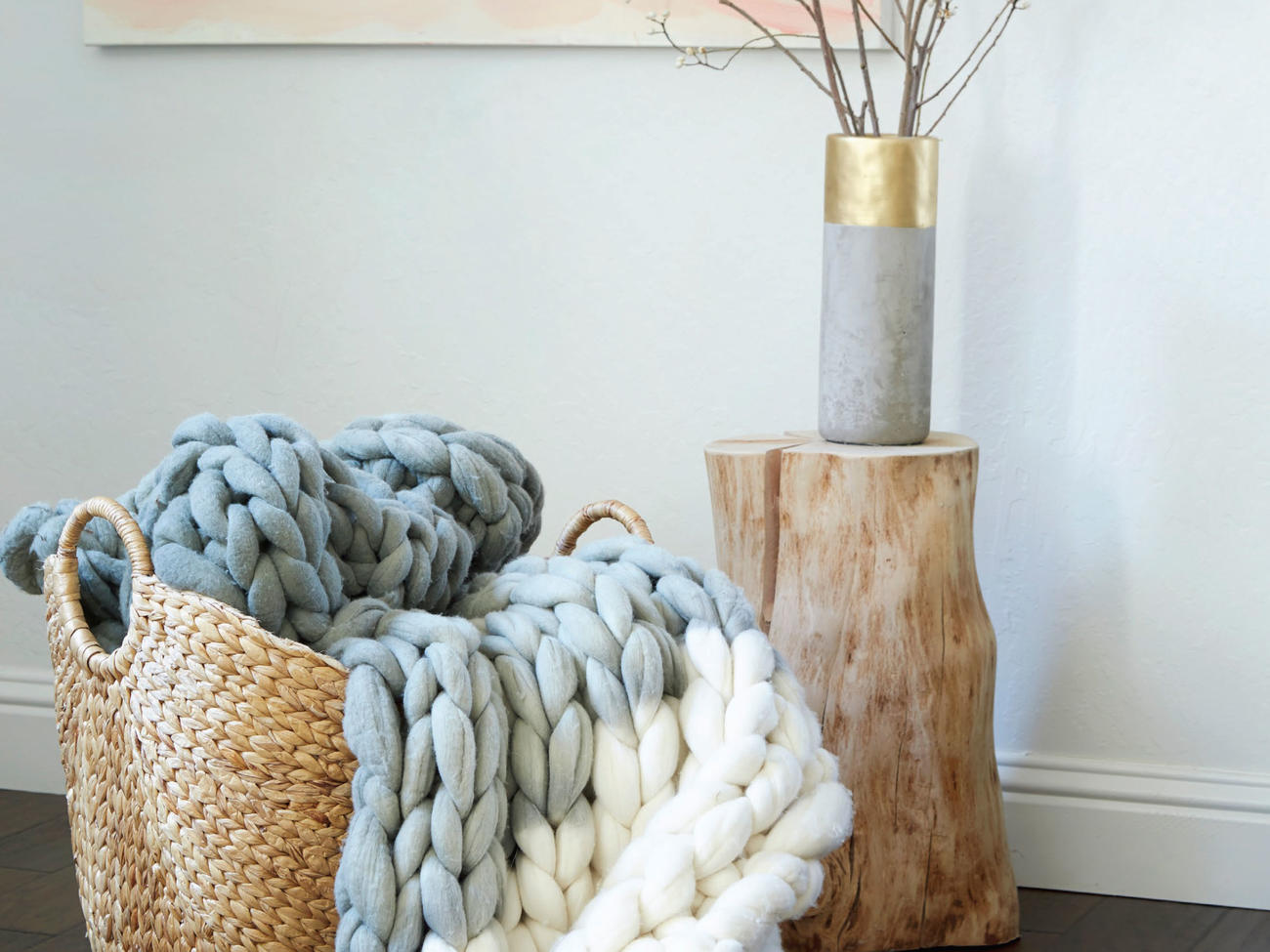
DIY Blue Spruce-Dyed Wool Blanket

Blue spruce (Picea glauca) branches (and other spruce varieties) create colors from light to dark teal-greens and grays. As an evergreen, popular for holiday decor, it is an excellent source for a winter dye. The color produced by blue spruce is especially stunning on wool, and winter is a good time to dip-dye an extra-thick knitted woolen winter blanket to bring the essence of outdoor evergreens into your home.
Spruce produces an aromatic and visually wondrous dye bath. This ombré dyeing project is a great way to spruce up your home by reusing your holiday tree and winter celebration decor. Melted snow water can be a great extra element to work with if you live in a snowy climate; it is a softer water containing fewer minerals and chemicals than tap water.
MATERIALS
- Chunky knitted 100-percent wool blanket (about 5 pounds)
- pH-neutral soap
- 2½ pounds pruned
- blue spruce branches and needles, chopped into 1 to 3-inch pieces
- ¹⁄³ cup aluminum sulfate
- ¹⁄³ cup cream of tartar (optional)
- ¾ tablespoon iron powder
